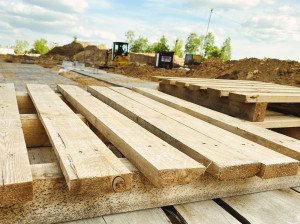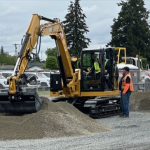Constructing a sustainable future: The importance of green initiatives on construction sites
In an era where environmental consciousness is paramount, industries of all kinds are being called upon to reassess their practices and minimize their ecological footprint. Among these, the construction industry holds a significant responsibility due to its extensive resource consumption and impact on the environment. Adopting green initiatives on construction sites isn’t merely a trend; it’s a vital step toward building a sustainable future for generations to come.
minimize their ecological footprint. Among these, the construction industry holds a significant responsibility due to its extensive resource consumption and impact on the environment. Adopting green initiatives on construction sites isn’t merely a trend; it’s a vital step toward building a sustainable future for generations to come.
Construction sites are notorious for their resource-intensive operations. From raw material extraction to transportation, construction processes contribute to pollution, deforestation and habitat destruction. However, integrating eco-conscious practices into these sites can mitigate these harmful effects and promote environmental stewardship.
One of the primary reasons for embracing green initiatives on construction sites is to reduce carbon emissions. Construction machinery, vehicles and equipment are major contributors to greenhouse gas emissions. By utilizing electric or hybrid machinery and optimizing transportation routes, construction companies can significantly decrease their carbon footprint. Additionally, implementing energy-efficient practices such as utilizing renewable energy sources for power generation and employing energy-saving technologies in building construction can further reduce emissions.
Furthermore, green initiatives can lead to significant reductions in waste generation. Construction sites generate vast amounts of waste, including excess materials, packaging and demolition debris. Much of this waste ends up in landfills, contributing to pollution and environmental degradation. By prioritizing waste reduction and implementing strategies such as recycling, reusing materials and adopting prefabrication techniques, construction companies can minimize their impact on landfills and conserve natural resources.
Water conservation is another crucial aspect of green initiatives on construction sites. Construction activities often require large quantities of water for various purposes, such as dust suppression, concrete mixing and cleaning. However, freshwater resources are finite and excessive usage can lead to depletion and ecosystem degradation. Implementing water-saving measures such as rainwater harvesting, using water-efficient equipment and employing low-flow fixtures can help conserve water and protect ecosystems.
Moreover, adopting green initiatives can enhance the overall health and well-being of construction workers and surrounding communities. Traditional construction practices often involve the use of hazardous materials and chemicals, posing risks to both human health and the environment. By prioritizing the use of non-toxic, eco-friendly materials and implementing proper safety measures, construction sites can create healthier and safer environments for workers and nearby residents.
In addition to environmental and health benefits, embracing green initiatives on construction sites can also result in long-term cost savings and improved project efficiency. While initial investments may be required to implement sustainable practices, the long-term savings from reduced energy consumption, waste disposal costs and maintenance expenses can outweigh the upfront costs. Furthermore, adopting sustainable construction practices can enhance project efficiency by minimizing delays, improving resource utilization and enhancing stakeholder satisfaction.
Furthermore, incorporating green building certifications such as LEED (Leadership in Energy and Environmental Design) or BREEAM (Building Research Establishment Environmental Assessment Method) can provide construction projects with a competitive edge in the market. These certifications demonstrate a commitment to sustainability and environmental responsibility, attracting environmentally conscious clients and investors.
Ultimately, embracing green initiatives on construction sites isn’t just about meeting regulatory requirements or following trends; it’s about taking proactive steps to protect the planet and create a more sustainable future. By prioritizing environmental stewardship, construction companies can minimize their ecological footprint, enhance project efficiency and contribute to the well-being of communities and ecosystems. We have a responsibility to integrate sustainability into every aspect of our operations and pave the way for a greener, more resilient future.








